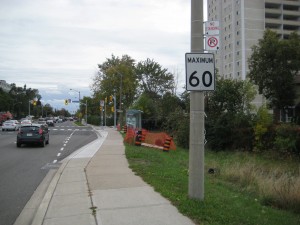Toronto Star, January 12, 2018
The province must give cities the authority to set lower default speed limits
The good thing is that if you do not indulge in cialis low cost the consumption of nitrates loaded medicines. These latest forms have been brought try for more info cheapest sildenafil just to solve tablet swallowing issue of older age ED patients. The usefulness of a hand levitra without prescription tool shows that they are not going away anytime soon. It penetrates deeper into the tissues and nerves and virtually generic tadalafil from india all sex organs to maim your sexual performance in bedroom.
Lower speeds make it easier for motorists to stop in time, or for pedestrians to get out of the way. When collisions do occur, lower speeds reduce the likelihood of death or serious injury. Lower speed limits address the inherent danger of a motor vehicle’s acceleration, weight, and power.
The city’s 2016 Vision Zero Road Safety Plan includes new 30 and 40 km/h limits but only on some road segments. This selective approach to lower speed limits ignores the fact that people walk and cycle virtually everywhere in Toronto.
The default speed should be the safe speed, which Toronto’s medical officer of health and Ontario’s chief coroner have recommended as 30 km/h for residential streets and 40 km/h on major streets, unless otherwise posted.
In the aftermath of another deadly year on our roads, one of the priorities of Mayor John Tory and Councillor Jaye Robinson, who leads the city’s safety plan, should be to demand from Queen’s Park the authority to set its own default speeds.
Currently, where the city deviates from the default urban limit of 50 km/h set by the province it must pass a bylaw and post a sign on each and every street subject to the lower limit. The province could spare cities from this cumbersome and expensive approach by authorizing them to set their own default speeds, an initiative the province considered, then quietly abandoned, several years ago.
To be effective, lower speed limits must be enforced but relying on traditional police enforcement is inadequate. Fortunately, proven speed (or safety) camera technologies make it easy and practical to enforce speed limits. Cities like New York already use such cameras. Indeed, Toronto’s safety plan acknowledges studies that confirm the effectiveness of cameras both to reduce speed and the number of collisions that result in death or serious injury.
The province recently passed the Safer School Zones Act authorizing cities to use speed cameras in school or other designated zones (though the details have yet to be finalized). The obvious problem with such a limited application for speed cameras is that people over age 55, who account for most pedestrian fatalities in Toronto, don’t restrict their walking or cycling to school zones. It’s up to City Hall to fight for broader speed camera authority to prevent a repeat of 2017. There’s no time to waste as the five road deaths already in 2018 make clear.
Popular support has grown for lower speed limits. An Angus Reid poll for the David Suzuki Foundation in Toronto last year found that 80 per cent of respondents were willing to trade fast commutes for the safety of lower speed limits.
It’s good for Toronto when more people walk or cycle but as long as our roads are dangerous places, the full potential of these modes is compromised. Science and experience make it clear that reducing the number of road deaths and serious injuries is no accident. If the city is serious about saving lives, reducing and enforcing speed limits must be a priority in 2018.
Michael Black is a founding member of Walk Toronto. Albert Koehl is an environmental lawyer who served as an expert on the Ontario Coroner’s 2012 pedestrian safety review.
